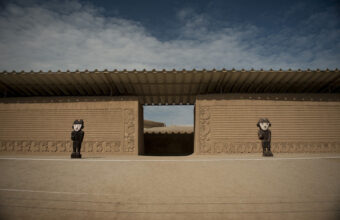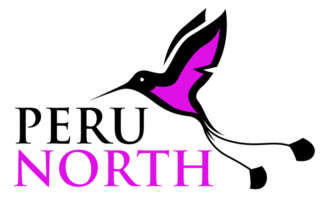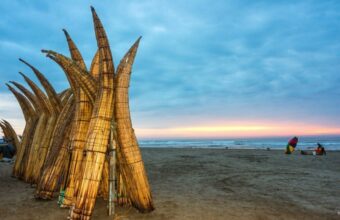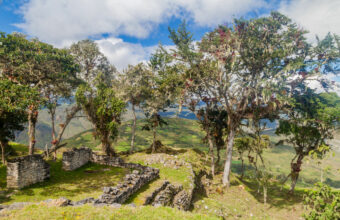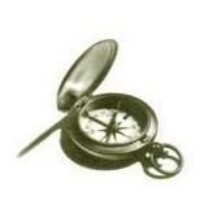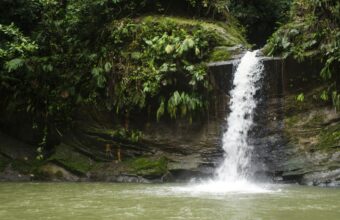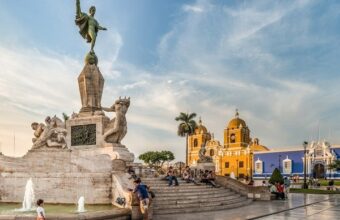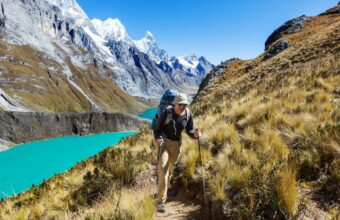How To Visit The Chan Chan Ruins
The Chimu's eerie fortress
With its strange, honeycomb-like walls and labyrinth of wavelike parapets, this sprawling adobe capital looks at first to have been made by extraterrestrials.
But don’t let its weird alien geometry fool you: Chan Chan was the seat of the greatest American empire prior to the Incas — and the largest pre-Columbian city ever built.
Chan Chan was constructed by the Chimú, a powerful, visionary civilisation that arose after the fall of the Moche in the ninth century A.D. In the wake of a disastrous El Niño event circa 1150, the Chimú began an aggressive campaign of expansion, incorporating several nearby cultures into their economy and swelling Chan Chan itself to cover some eight square miles. In 1470, just when the city was at its peak, the Inca overran it and took its rulers and artisans prisoner. The Chimú are now no more, but their surreal architecture remains, half-buried beneath scorching desert sands.
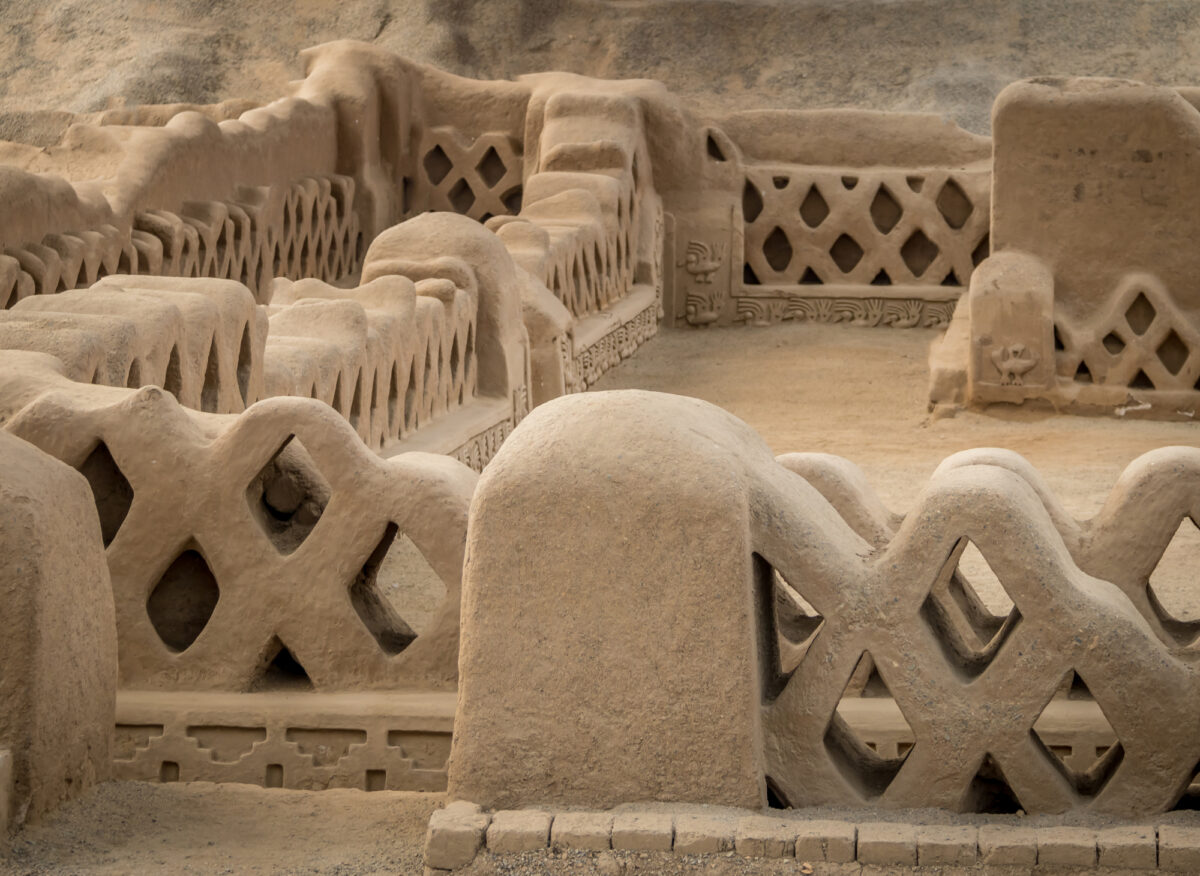
The intricate adobe walls of Chan Chan
Visiting the ruins of Chan Chan
Arriving at Chan Chan today from the modern city of Trujillo, most of what you see are mud-brick mounds, severely eroded by wind and rain. These are the former outskirts of Chan Chan, and could easily be mistaken for red-clay hummocks. Upon entering the complex, rectangular walls appear, but it’s only after passing through the narrow openings of these walls that the site’s full majesty reveals itself.
The different sectors of Chan Chan are in varying states of conservation. One of its precincts, the Tschudi ciudadela (royal compound), has almost been fully restored; its royal court, audience chambers, and mausoleum are the principal attraction for tourists today. Other areas of the city, however, are severely decayed, and frequently closed to the public.
The Chan Chan site
Chan Chan as a whole consists of between nine and twelve ciudadelas, depending on how you count. These were rectangular enclosures with 30-foot walls that served as palaces for the Chimú kings. When one king died, his ciudadela would be converted into a mausoleum, and his successor would build another enclosure to serve as his own royal court.
The Tschudi ciudadela is a hybrid reconstruction consisting of original adobe walls and modern fibreglass detailing. As you enter, you’ll see a vast ceremonial plaza with a raised platform against the far wall. This may have been a waiting area for subjects requesting an audience with the king. From there, the tour continues to the right, where you’ll see an exterior wall ornamented with mud-brick friezes of fish, waves, and pelicans.
Next stop is a row of chambers called audiencias, which likely served as administrative offices for courtly officials. They’re adjacent to a second ceremonial plaza, from which a ramp leads up to a sunken garden that’s been filled with a freshwater pond and totora reeds. At the far end of the compound lies the royal mausoleum, where the king was buried with his entourage of young girls (the Chimú practised human sacrifice) as well as gold, silver, and spondylus-shell treasures.
Key features
A few features to watch out for include:
Friezes: Many of the friezes at Chan Chan depict marine subjects. The ubiquitous cross-hatching on the walls probably represents a fisherman’s net, while the fish and waves refer to the Chimús’ principal source of protein. However, the artists were sometimes given to fits of caprice: in one chamber, the designs show squirrels playing with what appear to be pet geckos.
Anti-earthquake design: Peru is notoriously earthquake-prone, but Chan Chan’s walls have successfully resisted tremors due to their anti-seismic design. This includes a slight inward taper and adobe-brick construction to absorb shocks.
Riding the waves: In addition to their skills at architecture and metallurgy, the Chimú are also credited with having invented the caballitos de totora (reed-woven canoes), still used by fishermen along Peru’s north coast. Surf enthusiasts can head to Huanchaco, Chan Chan’s neighbouring beach town, to try one out.
The history of Chan Chan
Chan Chan, like all metropolises, was diverse. Apart from the royal precincts in the city centre, it had several barrios that housed artisans: metalworkers, weavers and ceramic makers. Some of these craftsmen enjoyed considerable prestige, for handicrafts were among Chan Chan’s chief exports. Apart from this, there were humbler sectors for labourers and merchants in the city’s periphery, while fishers and farmers lived outside the urban walls in simple wattle-and-daub huts.
Chimú culture
The Chimú may have arisen as a civilisation around 900 or 1000 AD, but their imperial phase began in earnest in 1150, after a massive El Niño event made them question the fragility of their agricultural system. As a result, they sought to reclaim vast swathes of territory from the desert by means of canals, and this led them to conquer or enter into economic alliances with nearly all of the cultures of northern Peru.
In the 1300s, they took over the Sicán people in the Lambayeque valley to the north, learning from them the art of fine metalworking. By 1400, they controlled nearly 800 miles of coastal territory from Tumbes in the north to Chancay in the south. Their empire ended only with their invasion by the Inca in 1470.
The Chimú are probably best known for their society building. Chan Chan was home to more than 10,000 homes and urban spaces such as wells, canals and temples allowed people to gather together. The Chimú even decorated their homes with precious metals and friezes to distinguish wealth.
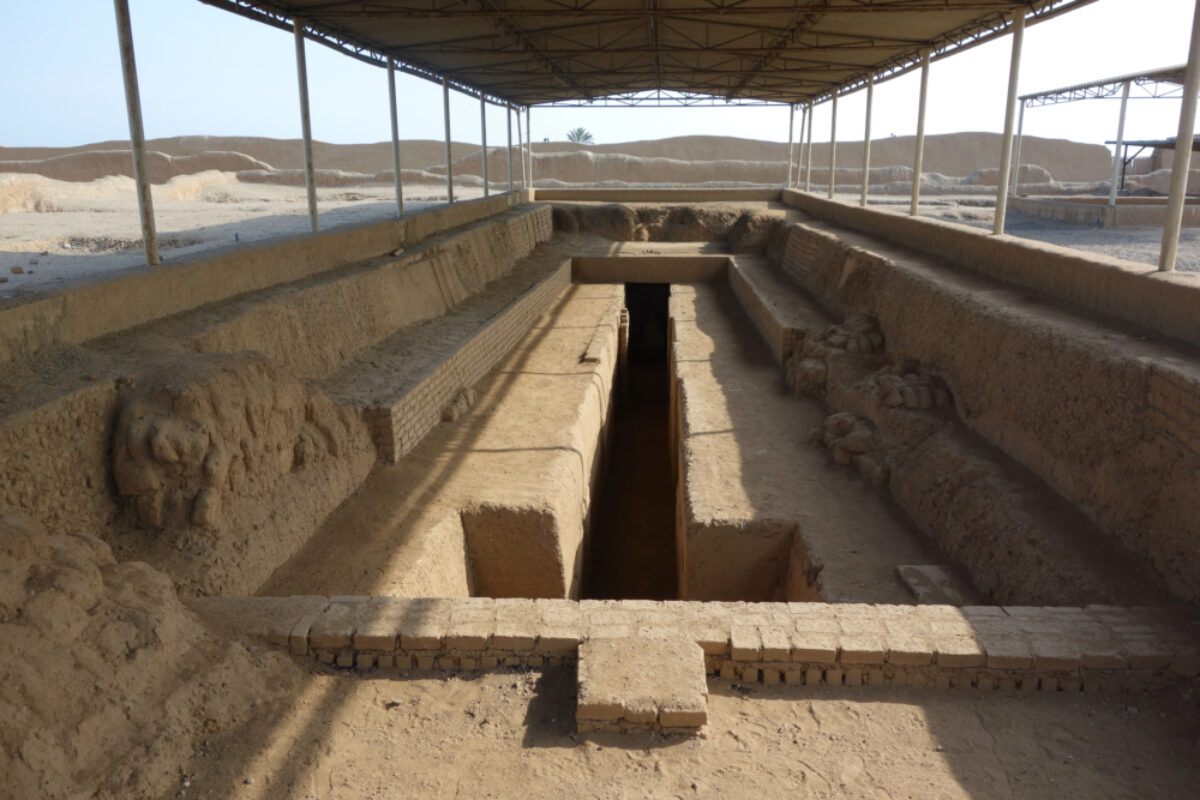
How to visit Chan Chan
For most visitors, half a day should suffice to see the site. Allow three to four hours — more if you want to see the archaeological museum outside the complex’s grounds.
As is frequently the case in Peru, signage and other information at Chan Chan is limited. Maps and brochures are available, but they’re best supplemented by an informed guide, available either outside the ticket office or back in Trujillo. There’s also an interesting museum for the site, inconveniently located a third of a mile down the road from Chan Chan’s entrance.
At the time of writing, the Chan Chan museum (though not the site itself) is closed on Mondays.

